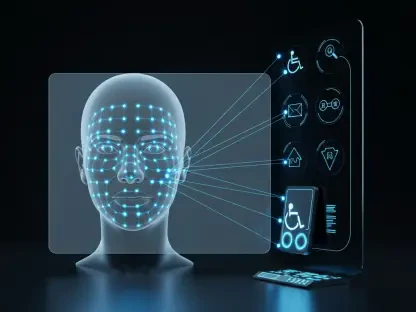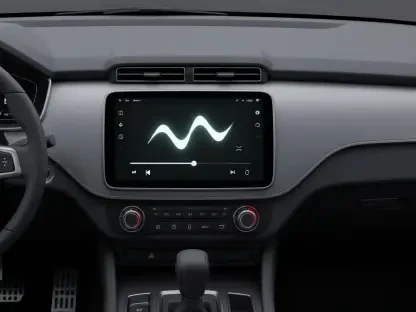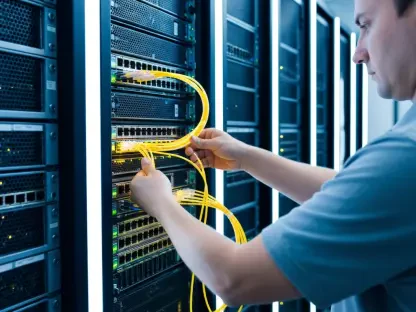The rapid advancement of technology is reshaping the landscape of government and society, creating both opportunities and challenges. To navigate this complex terrain effectively, a deep understanding of how emerging software will impact various sectors, including defense and security, is essential. This requires a thorough examination of the cultural contexts that shape the development, use, and regulation of new systems.
Understanding the Information Environment
The information environment encompasses all processes through which individuals engage with information. This includes the infrastructure that facilitates connectivity and the cognitive factors influencing how people receive and process information. Recognizing these elements is crucial for understanding how automation can alter cultural dynamics.
Research Approach
A recent study conducted by researchers from RAND Europe and Frazer Nash Consulting focused on assessing the cultural implications of innovations in the information environment.
This study combined literature reviews and expert interviews to identify key technological advancements shaping the future. A bespoke framework was developed to evaluate the cultural implications of these tools, examining how cultural factors may mediate or reinforce the risks and opportunities presented by software innovation.
The Concept of Culture in Technological Change
Culture is a dynamic, socially constructed reality shared by members of a group. It encompasses community ideas, values, and behaviors that shape individuals’ ways of being in the world. To grasp the cultural impact of technology, the RAND study established a framework that contextualizes the origins and intended uses of these tools and their effects on various societal dimensions:
Recognizing Technology as an Actant: This step examines how new tech and its intended use can affect the public, including its regulatory context.
Developing a Cultural Topography: This involves mapping a population’s cultural landscape, focusing on identities, norms, values, and perceptual lenses.
Ecological Interactions: This assesses how automation affects people at various interaction levels, from individual to societal domains.
Influence vs. Integration: The final step evaluates whether new gadgets stimulate cultural change or integrate within existing frameworks.
Cultural Impact of Emerging Technologies
The study identified several trends expected to influence the future information environment significantly:
Automated Information Systems
Augmented and Mixed Reality
Advanced Connectivity
Human Augmentation
Information Security Technologies
These systems present profound implications across four cultural dimensions: identities, norms, values, and perceptual lenses.
Cultural Identities
As gadgets evolve, traditional demographic identities may diminish, giving way to transnational identities shaped by virtual communication. For instance, human augmentation software may redefine concepts of personhood, raising ethical questions about the human experience.
Norms and Values
Technological advances challenge cultural norms related to privacy, equity, and accountability. The rise of meta spaces, for example, introduces opportunities for self-expression while complicating accountability for behavior in digital realms.
Determining Facts
New tools risk amplifying cognitive biases, making it increasingly difficult for individuals to identify shared facts. Automated information systems may blur the lines between truth and fiction, potentially leading to a “truth crisis” in society.
How Emerging Technologies Contribute to Cultural Change
Innovation can bring big changes to a culture, but not all tools will have the same effect. Many will become part of existing cultural ways, influenced by established norms and values. However, some areas show potential for transformations at different levels of involvement.
At the Personal Level: Tools like human augmentation may challenge the very nature of human identity, intertwining it with automation and leading to disruptive sociocultural effects.
Among People and Between Humans and Technologies: Software that customizes personal experiences may cause tension and make it difficult for communities to identify common cultural points. This struggle could make it harder for everyone to understand society’s realities.
Regarding Interaction with the Broader Environment: New software could change how we interact from in-person to online. Augmented and virtual reality might reduce the importance of physical spaces and change cities through integration.
Across Different Tech Areas: The fast pace of innovation might make it harder for different cultures to come together, as social organizations try to adjust their rules and behaviors. This could lead to cultural changes influenced by automation.
While new tools can empower social movements by facilitating advocacy and communication, they can also be weaponized by opposing forces, complicating the landscape of cultural change.
Areas for Future Research
This initial assessment underscores the need for ongoing research into the cultural implications of technological changes across various sectors. Recommendations include:
Apply the developed framework holistically for a deeper analysis of selected gadgets.
Conduct longitudinal studies to build a robust evidence base.
Iterate the framework to incorporate lessons learned.
Embed software analyses within the cultural contexts of specific populations.
Study how automation has contributed to the development of societies in the past to gain insights into future trends.
The Cyclical Relationship Between Technology and Culture
The interplay between innovation and community is characterized by a cyclical relationship where each affects and shapes the other. This co-dependence has been evident since the dawn of humanity, evolving from simple tools to modern advancements like the printing press and computers. The ongoing debate about whether these innovations serve as a boon or bane for everyday life highlights their profound influence on customs, traditions, and social values.
Influence on Cultural Dynamics
Culture is reflected in the values, norms, and practices of a society. It manifests through individual perceptions and behaviors, which are continuously driven by advancements in various fields. These developments shape fundamental aspects of life, including language, art, education, and mobility.
However, this impact is not always harmonious. Progress must align with the social and cultural conditions of a community; otherwise, tensions can arise between the advancement and the preservation of cultural values. A balanced approach allows individuals to express themselves freely in a world that transcends ethnic, age, or educational boundaries.
Challenges to Tradition
Advancements often compete with tradition within communities. While progress in medical science, engineering, and communication has driven globalization and modernization, it can also challenge traditional ways of life. As highlighted by Sherry Turkle in her TED talks, an overreliance on these innovations can lead to social isolation, as individuals may prioritize virtual connections over genuine interpersonal relationships. While such developments have the potential to support and preserve traditions, they can also undermine social cohesion and long-standing values if not approached thoughtfully.
Shifts in Social Values
Innovations have transformed the landscape of knowledge and information exchange, enabling discussions on a broad range of topics and facilitating social transformation. They play a crucial role in enhancing interpersonal connections and addressing fundamental societal needs in sectors such as health and transportation.
However, there is a growing concern that increased dependence on these advancements can lead to social regression, with individuals spending more time in digital environments than in direct social interactions. The negative aspects of such progress—such as job displacement and the erosion of traditional media—underscore the need for a balanced perspective on their influence on social values.
Conclusion
Despite the challenges posed by these advancements, their benefits are undeniable. They have streamlined processes, fostered global connectivity, and offered new ways to transcend cultural and social barriers. As we move further into the 21st century, it is crucial to guide development toward positive social change, ensuring that it fosters meaningful connections and respects cultural values. The goal should be to harness these innovations to enrich our lives while promoting mutual respect and understanding across diverse communities.









